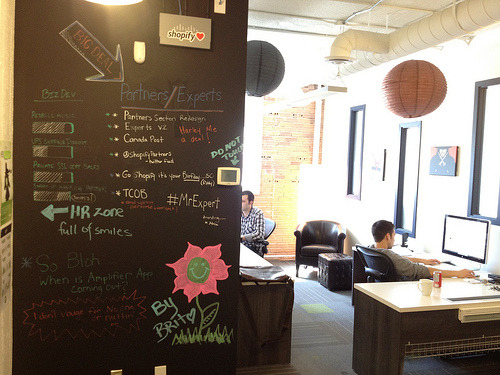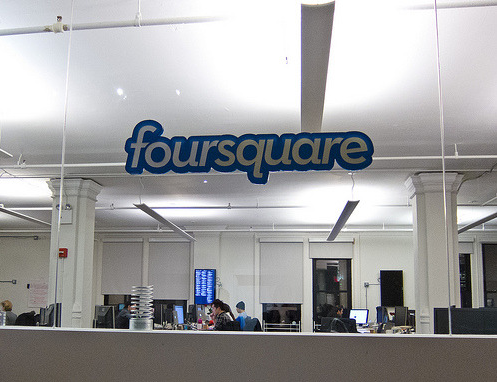There’s one internal communication tool, little known outside of tech circles, that’s been the management engine behind many of tech’s biggest successes. Known as Google Snippets (having started as an internal tool at Google), this single tool has grown to become one that many of the best technology companies use to keep their teams aligned and working in sync while giving them the freedom to work creatively and autonomously.
The reason the system at Google caught on is that it’s not only powerful but incredibly simple to use.
Snippets sends everyone a weekly email on Monday asking you what you did last week and what you planned to get done the next week. When you reply to the email, your response goes onto an internally accessible webpage, and the next day, you’ll get an email that shows you what everyone else in the company is working on.
What began as a modest tool for keeping everyone in the loop became a powerful tool for company-wide transparency, as Google grew from hundreds to tens of thousands of people. With Google snippets, every employee had access to important knowledge regarding what was happening in the company — a stark contrast from the old days when managers hoarded information and kept it from their reports.
As Googlers eventually spread their wings and left the company for other tech pastures, they brought snippets with them, which is how similar systems became critical management tools at companies like Foursquare.
Here’s why three of the fastest-rising tech companies today use snippets and how it fuels their success:
1. Foursquare: all-around reporting

Most corporate reporting systems force underlings to report up to management and executives. That made sense in the command-and-control management framework, but it’s totally out of date in the flat and decentralized way nimble tech startups are organized.
Because snippets asks everyone to account for what they’re working on, it’s a system that’s unique in that it flips the way company reporting is typically organized. Instead of employees only reporting to managers, managers report to employees as well. When Dennis Crowley, co-founder and CEO of Foursquare sends out his snippets, he’s reporting to the team as any other member of the team would:
When I send out mine, the first heading is, “Things I’m Psyched About,” and the next is, “Things That I’m Not So Psyched About” or “Things I’m Stressed About.” The next thing is usually a quote of the week — something I heard from one of our investors or maybe overheard from an employee — and then I have my snippets below that.
In response to his snippets, employees will send him feedback on how he can improve, which inverts the typical reporting-into-feedback power dynamic. “I get a lot of feedback from employees,” Crowley says. “It only takes them a minute or two to read, and it’s like a bird’s-eye view of what I think is going well at the company and areas where I think we could improve.”
2. BuzzFeed: engineering serendipity

When a tech startup is young, it has that incredibly tight-knit feeling that everyone knows what everyone is working on in the company. When the company begins to grow rapidly, it’s easy to lose that magic and start to have a company in which one hand doesn’t know what the other is doing.
BuzzFeed is a company whose headcount has tripled to 300 employees in a year, so it knows the meaning of growing pains firsthand. For Jon Steinberg, founder and CEO of BuzzFeed, snippets is his “kismet engine” that helps him connect the dots on what’s happening in the company given that individual and team actions often seem disparate without contextualization in the company as a whole.
It’s engineering serendipity, and it’s not unlike what Zappos is doing with their new corporate campus and their revitalization of downtown Las Vegas. The core idea is to put people who may be spread out — whether that’s physically or mentally — and put them in a “statistically small space” so that they’ll collide. Innovation and serendipity results from those random conversations and collisions.
In modern, data-rich companies, information on what’s happening in a company is fragmented across people and systems, which makes it incredibly difficult to gather information on what’s getting done in the company. So people set up meetings, which become a huge time and productivity killer.
Because snippets is a single, high-signal place with what everyone in the company got done, it’s a “statistically small space” for information that makes it far easier to make connections across different groups and disciplines. That single, high-level view of the whole company brings individual data points into focus and paints a portrait of the company as a whole, which drives unlikely connections and insights.
3. Shopify: peer recognition

As a company grows in headcount and complexity, it becomes harder and harder to ensure that individuals receive praise and are appreciated for their contributions and effort. What you don’t want your company to become is a place where only the loudest employees receive recognition for their work.
At Shopify, they use iDoneThis for their snippets system because it drives crowdsourced, peer-driven recognition for the awesome stuff that’s getting done at Shopify, every day.
Snippets is a system where what you share is internally public, which means that what’s broadcasted to the company isn’t what’s cherrypicked by managers and executives. Everyone is given the opportunity to show their unfiltered accomplishments which becomes the starting point for participatory likes and words of praise from colleagues. This drives a grassroots company culture of appreciation and recognition, not one that needs to be “mandated” by management.
It comes down to knowing what’s going on at work — a surprisingly thorny challenge that can grow into an impenetrable thicket if left unaddressed. Google’s snippets system demonstrated that the answer is finding an easy way to ask not just your work neighbor but your colleague on the next floor or another country, “hey, so what are you working on?” — in a way that doesn’t interrupt, distract, or take up valuable time like meetings can. The benefits to possessing this common knowledge about everyone’s work are tremendous — fueling a transparent, connected, and feedback-rich culture.
Liked this post? Subscribe to our free newsletter for more great content on management, productivity, and company culture!
Images: Scott Beale/Laughing Squid (Foursquare & Buzzfeed photos)

